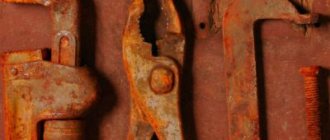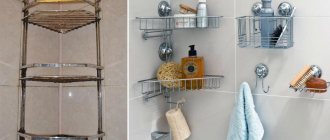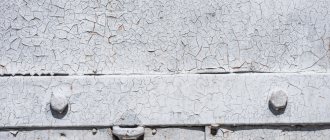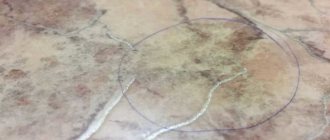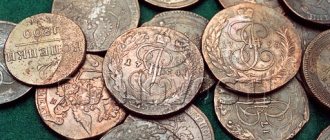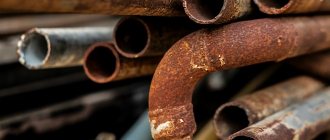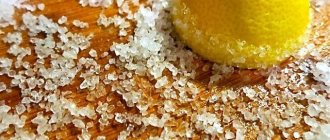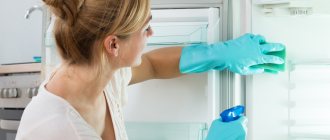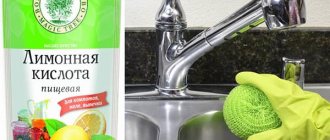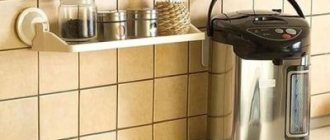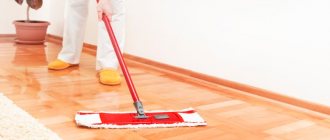Contact oxidation is one of the main enemies of electrical equipment. Approximately a fifth of all repairs to the electrical part of a car are in one way or another related to oxidation processes.
That's why many drivers often wonder how to clean oxidized contacts in a car.
Oxidation of electrical conductors
The oxidation of contacts (more precisely, oxidation) is understood as a chemical reaction in which the metal material of the conductor and oxygen or its chemical compounds enter. As a result of this reaction, a metal oxide is formed. This oxide:
- prevents the passage of electric current;
- promotes heating of the conductor in the contact zone;
- complicates the soldering and welding process;
- may break electrical contact;
- leads to poor contact in the area of connectors and connections.
Oxidation of electrical conductors is the cause of 20-25% of all electrical faults in a car.
Paintwork
This method of combating corrosion is very common and is considered one of the most reliable. Such products are very cheap and have a simple application technology.
Paint and varnish coatings also guarantee the product a beautiful appearance. It can be applied at home or in a workshop.
This method of corrosion protection is accessible to most people.
All proposed methods for removing rust from metal surfaces should be used strictly according to the instructions. It is not recommended to increase their exposure time, since any substance can damage the metal.
In EPC “OMEGA” you can clear and restore the old VIN number
In our center, it is possible for your car to clean and restore the old VIN number, frame, body or engine covered with corrosion.
Our expert carries out processing using a special forensic technique, with stripping and erasing the number with special acids.
Based on the results of the examination, it provides an additional conclusion from a forensic expert to confirm the absence of non-factory changes, that the number has not been changed, has not been interrupted, that nothing has been welded in and that the car is clean, namely:
- The location on the marked panel of the frame or body, the appearance and structure of the vehicle identification number symbols correspond to the technical documentation of the manufacturer.
- The design of the frame markings of the presented car corresponds to the design of the markings of the frames and bodies or engines of the studied cars of this series, made at the manufacturer in accordance with the marking technology used.
- The existing markings are applied smoothly, without significant vertical and horizontal displacement, without deviation from the conventional vertical and horizontal axes and without “creeping” of numbers onto one another, which indicates a mechanized method of marking.
- The design and geometric parameters of the markings correspond to the design and dimensions of the markings of frames, bodies or engines of cars of this series.
- In order to identify signs of a possible change in the vehicle identification number designations, the surface of the panel in the area where the designations are located is properly prepared and treated with a metal etching reagent.
- In the process of examining the marked panel, in its individual areas (marking area, in places of fastening with other body parts, etc.), the primer and paint coating were washed off to detect extraneous (not structurally provided for) welds and overlays in the marking area.
Look at examples of our work on cleaning and restoring VIN numbers “BEFORE” and “AFTER”?
How to remove oxidation from contacts
The traditional means of cleaning oxidized contacts is a knife. Traces of oxidation are removed mechanically. Without skills, you can use a knife to make notches on the wires (especially if they are thin). Notches can lead to breakage of the conductor. It is better to clean the wire with fine sandpaper.
If you have a soldering iron in your repair kit, you can tin the oxidized conductor. Tinning is the coating of a conductor with a thin layer of solder. In any case, it has to be done if the wiring connection is supposed to be made by soldering. To remove oxidized areas, rosin (pine or spruce resin) or fluxes are used. Flux is rosin dissolved in alcohol. This is a good inactive flux. Resin can be found in any forest where pine (or spruce) trees grow.
Active acid fluxes, which contain acids, are also used. Such fluxes cannot be used to repair control units and connectors, since active acid fluxes conduct electric current.
The popular active flux is an aspirin tablet (acetylsalicylic acid). It is capable of tinning steel and aluminum. But you should use it extremely carefully during the soldering process. Her vapors are very caustic and “nasty.”
Recently, special contact cleaners in the form of a spray have become popular, with which you can also treat contacts in female connectors.
How to identify oxidized contacts
No special preventative work is provided to identify oxidized contacts. Typically, identification of oxidation sites begins during equipment failures, the appearance of foreign odors, indicating the process of burning of contacts or insulators.
Oxidation is most often observed on contacts through which large currents pass, as well as those located in places in contact with the external environment and heated parts of the engine:
- battery terminals;
- starter contacts;
- installation locations of relays and fuses;
- electrical wiring connectors under the hood of the car;
- ABS sensor connectors;
- contact areas of electric motors of radiator fans and stoves;
- control units for engine, body, ABS, and other vehicle systems;
- contacts located in the steering wheel, squibs of the active safety system.
Any qualified repair of a car's electrical equipment begins with checking the contacts, connectors and connections. It begins with a visual inspection of the presence of changes in the color of the conductor insulation and the presence of burn marks.
Using the tactile method (feeling with your fingers), you can check for increased temperature in the area of contacts and connections. The spark detects itself in a darkened room or at night. The supposed lack of contact is checked using a multimeter.
The most difficult thing to detect is a connection failure on the electronic control unit boards. But even here you can detect a visual change in the soldering areas and the color of the conductors.
In winter, when a car is used in urban conditions, conductors can be destroyed from the inside of the insulation. During extreme cold weather, the insulation cracks, allowing salt water to seep into the conductor area. The process of electrolysis begins (and not oxidation, as many assume). It turns the copper conductor into dust, through which current sometimes passes, sometimes not. Such a malfunction can be detected by the presence of a greenish coating and cracks in the insulation.
Traditional methods
You can quickly remove rust from a metal surface at home using simple home remedies.
There are many options to make the surface of objects perfectly clean, remove all contaminants, and also get rid of corrosion.
Among them are the use of vinegar, soda, oxalic and hydrochloric acid, and hydrogen peroxide. Aluminum foil, citric acid and others also help to clean it.
Aluminium foil
This product removes rust from metal no worse than any abrasive brush, only much more economically. In addition, every housewife has aluminum foil in her kitchen, but no brush.
Removing rust from metal at home is very simple and easy. In this case, there is no need to prepare any solutions.
Cut a small piece of foil, crumple it into a tight ball, and begin cleaning the surface.
The method removes corrosion on household appliances, for example, on an iron. It can also be used to clean corrosion from any metal surface in the house.
Cleaning with foil doesn't always help. When the pipe is completely rusty, don't waste your time, better buy a new pipe. Surely in a few months (at best) traces of corrosion will again appear on it.
Vinegar
This product will definitely be found in any kitchen. To achieve ideal cleaning results, it is better to use white vinegar.
A metal rust remover effectively cleans it without compromising the integrity of other surfaces.
How to scrub off corrosion with vinegar:
- Pour white vinegar into a container large enough to fit the spoiled item.
- Immerse the product in a container with product. Do not dilute the solution.
- Leave the item in the container of white vinegar until the corrosion has weakened enough to be easily removed.
- Put on rubber gloves, remove the product from the solution and clean with a wire brush.
- Rinse the metal well, then dry.
In fact, the whole process goes very quickly, because while the metal is soaking, you can do laundry or spend time with your loved ones.
A food product such as soda is well capable of cleaning metal from rust. This tool is truly universal. Using soda, you can also wash clothes until they are white and remove coffee, blood and green grass stains.
Procedure to complete:
- It is necessary to prepare the composition so that you get a texture like store-bought sour cream, but not too thick. To do this, you will need to mix baking soda with plain water in a separate container. Select the proportions yourself, focusing on the area to be processed.
- Apply the paste to the metal surface. Allow the product to sit for a while before rinsing with water. 30 minutes is enough, you can support it more, but it will not become more effective.
- After half an hour, scrub the surface with a brush with metal teeth, then rinse with water.
This technology is not particularly effective. Baking soda can only remove small stains at a time. If the processing area is large, more paste will be needed, and therefore more time and effort.
Lemon acid
One of the most effective and easiest ways to remove rust from metal is to use citric acid.
It has many advantages, including:
- paint from a metal surface does not peel off or swell;
- accessible and cheap;
- does not contain aggressive chemicals;
- does not harm the skin of the hands (in some cases allergic reactions occur);
- cheaper than any chemical reagent.
To work with citric acid, buy gloves and safety glasses. During the period of scraping off rust, pieces can fly into the eyes and injure them.
How to clean metal surfaces:
- To begin with, parts requiring processing must be degreased. Wash them with dishwashing detergent.
- Pour warm water into a suitable container and add citric acid. The more concentrated the solution, the better its reaction with the metal. For 100 ml of water you will need approximately 80 grams of citric acid.
- Leave the products in the solution for several hours. After just 5 minutes, if you look closely, you can see bubbles. This indicates that the reaction is good, and the process of cleaning the metal from rust has begun.
When the corrosion has completely disappeared, wash the items under running water, removing any residue with a wire brush.
Oxalic acid
What do you know about such a cleaning agent as oxalic acid? As it turned out, this product is very effective; it is used to wash off rust from taps, in the bathroom, in the car.
Acids are the best products recommended to use for corrosion on metal.
Getting rid of corrosion correctly:
- Clean the area, remove all objects that will interfere with work.
- First you need to degrease the products. Then, putting on a respirator and rubber gloves, get to work.
- Dilute 5 tsp. oxalic acid in a glass of water. Wait for it to dissolve, place objects in the solution for 20 minutes, or brush them.
- Then take a wire brush and remove the rust layer.
- Rinse everything off with water.
Oxalic acid is a good remedy. But it is not recommended to reuse it.
Hydrochloric acid
Rusting is a process accompanied by corrosion of metal and deterioration of its appearance. Stains can be found not only in the car, but also in the kitchen on taps.
Rust can be removed easily and quickly using hydrochloric acid. This folk method is no less effective than the previous ones. The whole difference lies in the funds and the method of its implementation.
How to remove rust from metal:
- To implement the method you will need hydrochloric acid, rags, rubber gloves and a lot of water.
- Put on rubber gloves, take a rag and treat all contaminated areas with the product. Rub the metal surface as if you were polishing it.
- After 30 minutes, rinse everything with plenty of water. Hydrochloric acid can damage the skin of your hands, so be careful with it.
This method of removing rust from metal is very effective. It is used not only at home; many service station technicians use this technique to get rid of corrosion on the metal of the car.
Hydrogen peroxide
Hydrogen peroxide has unique oxidizing and reducing properties.
The product used in medicine to disinfect wounds is also actively used to scrub off corrosion.
Hydrogen peroxide is used to restore bathtubs, toilets, kitchen knives and tools.
Hydrogen peroxide works more effectively if used together with trisodium phosphate.
How to remove rust from metal:
- Dilute 4 tbsp in a suitable container. l. trisodium phosphate powder in 3 liters of water. Then carefully pour in 50 ml of hydrogen peroxide. The latter is added in small portions; divide the entire portion into 5 parts.
- Soak the tools in the solution for 30 minutes. If the metal object is large, put on rubber gloves, take a dish sponge and apply the product.
- Rub stains without fear of damaging the material; the product is absolutely safe for it. Leave for 10 minutes, let the solution work a little longer.
- Rinse all treated areas with clean water.
You can also use hydrogen peroxide separately by diluting it in water. But this remedy does not work as well as with trisodium phosphate.
